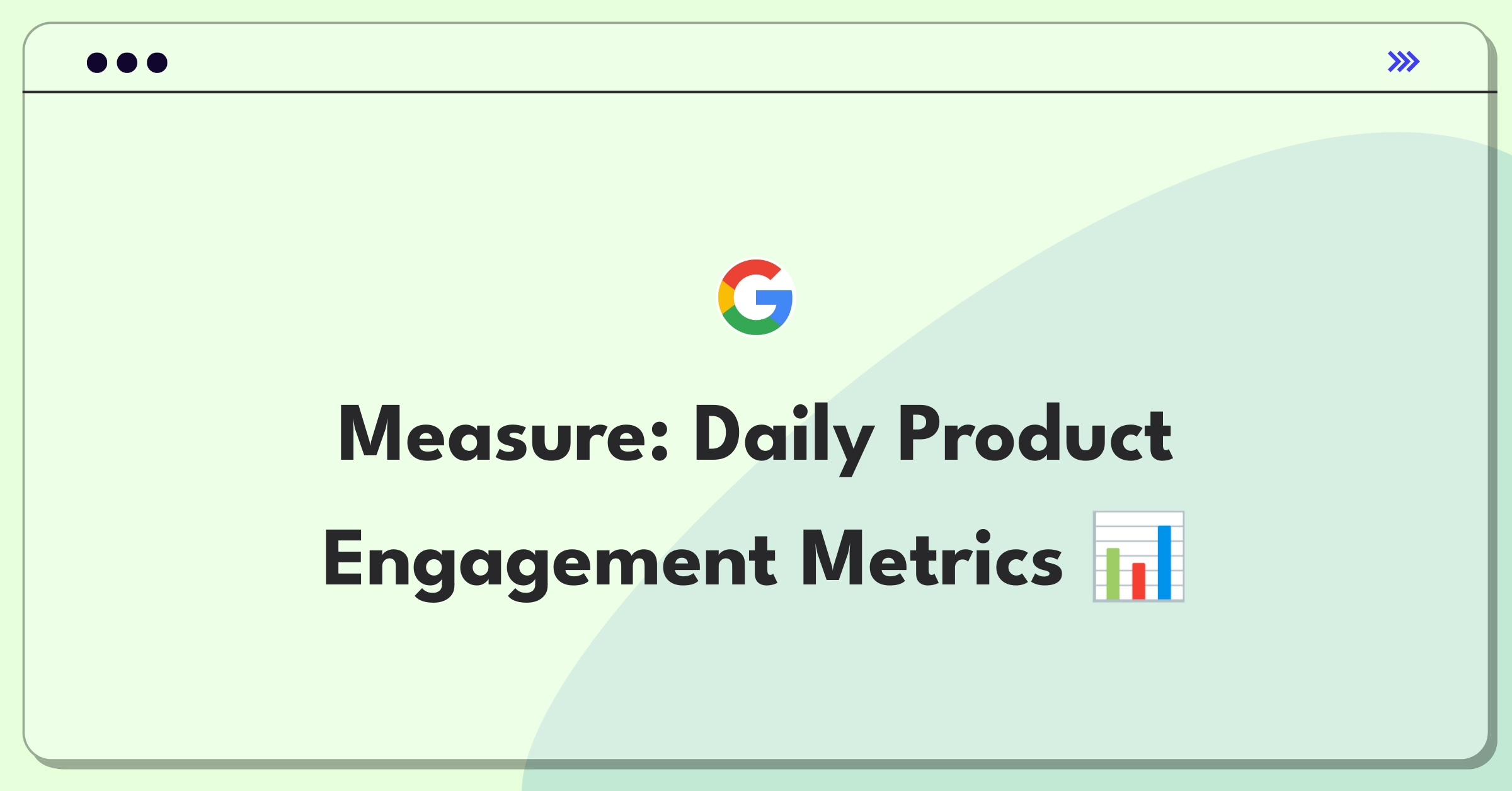Introduction
To approach this product success metrics problem effectively, I'll follow a simple framework that covers core metrics, supporting indicators, and risk factors while considering all key stakeholders. This structured approach will help us evaluate the daily products we use and understand what makes them successful.
- We'll examine three products used daily and their success metrics
- We'll analyze each product's context, goals, and key performance indicators
- We'll consider how these metrics drive product strategy and improvements
Framework Overview
I'll follow a simple success metrics framework covering product context, success metrics hierarchy, and strategic implications for each daily-use product.
Step 1
Product Context (5 minutes)
Let's consider three products I use daily: a smartphone, a coffee maker, and a note-taking app.
-
Smartphone (e.g., iPhone):
- Definition: A multi-functional mobile device for communication, productivity, and entertainment
- Key stakeholders: Users, app developers, telecom providers, Apple
- User flow: Unlock device > Navigate to app > Perform task > Lock device
- Company strategy: Ecosystem lock-in, hardware-software integration, privacy focus
- Competitors: Android devices, offering more customization but less ecosystem integration
- Product lifecycle: Mature, with incremental innovations in each release
-
Coffee Maker (e.g., Nespresso):
- Definition: An appliance for brewing single-serve coffee using capsules
- Key stakeholders: Coffee drinkers, Nespresso, retail partners, coffee farmers
- User flow: Insert capsule > Add water > Press brew button > Enjoy coffee
- Company strategy: Premium positioning, recurring revenue from capsule sales
- Competitors: Traditional drip coffee makers, other pod-based systems like Keurig
- Product lifecycle: Growth phase, expanding into new markets and flavors
-
Note-taking App (e.g., Evernote):
- Definition: A cross-platform application for capturing, organizing, and sharing notes
- Key stakeholders: Individual users, business teams, integration partners
- User flow: Open app > Create/edit note > Add content (text, images, etc.) > Save/sync
- Company strategy: Freemium model, focus on productivity and organization
- Competitors: Microsoft OneNote, Apple Notes, newer entrants like Notion
- Product lifecycle: Mature, facing competition from newer, more feature-rich alternatives
Hardware considerations (Smartphone and Coffee Maker):
- Manufacturing processes and quality control
- Supply chain management for components and materials
- Service and repair infrastructure
Software considerations (Note-taking App):
- Cloud-based platform with mobile and desktop clients
- Integration with other productivity tools (e.g., calendar, email)
- Regular updates and feature releases
Physical Product considerations (Coffee Maker):
- Retail partnerships and in-store displays
- Capsule production and distribution
- Recycling programs for used capsules
Subscribe to access the full answer
Monthly Plan
The perfect plan for PMs who are in the final leg of their interview preparation
$66.00 /month
- Access to 8,000+ PM Questions
- 10 AI resume reviews credits
- Access to company guides
- Basic email support
- Access to community Q&A
Yearly Plan
The ultimate plan for aspiring PMs, SPMs and those preparing for big-tech
- Everything in monthly plan
- Priority queue for AI resume review
- Monthly/Weekly newsletters
- Access to premium features
- Priority response to requested question


.png)